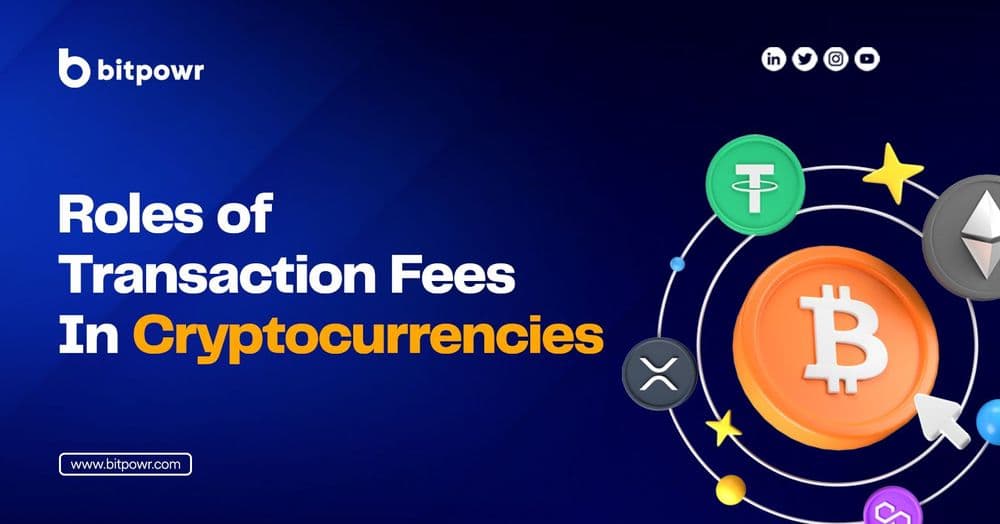The role of transaction fees in cryptocurrencies is essential for maintaining the efficiency, security, and integrity of blockchain networks. Transaction fees are charges that users pay to the blockchain network for processing and verifying transactions. These fees compensate miners and validators who secure the network by adding transactions to the blockchain. Transaction fees vary based on factors like network congestion, transaction urgency, and computational complexity. They incentivize miners to prioritize transactions when they are higher, ensuring faster processing and maintaining a competitive market where users can choose to pay more for quicker transaction verification. Transaction fees play a crucial role in preventing spam transactions, deterring malicious activity, and sustaining a healthy and competitive cryptocurrency market.
How are fees calculated?
To understand how fees are calculated in the world of cryptocurrencies, particularly in transactions like Bitcoin, Ethereum, and others, it is crucial to delve into the mechanics behind these calculations. Cryptocurrency transaction fees play a pivotal role in maintaining the efficiency, security, and integrity of blockchain networks. These fees cover the processing and verification of transactions on decentralized networks of nodes, ensuring that transactions are added to the blockchain securely and efficiently.
Factors Influencing Fee Calculation
- Transaction Size: The size of a transaction in bytes directly impacts the fee charged. Larger transactions that require more space in a block incur higher fees.
- Transaction Complexity: The complexity of a transaction, determined by the number of inputs and outputs it contains, influences the fee. Transactions with multiple inputs and outputs are larger and more complex to process, leading to higher fees.
- Network Congestion: During peak periods when network capacity is strained by a high volume of transactions, fees increase as users compete for faster processing.
- Urgency: Users can prioritize their transactions by paying higher fees to incentivize miners to verify their transactions promptly.
Fee Calculation Process
- Base Fee: Each network sets a base fee per transaction.
- Fee Rate: The final fee charged is calculated based on factors like computational complexity, urgency, and network congestion.
- Satoshi per Byte: Bitcoin Fees are measured in satoshis per byte, reflecting the cost of transaction space on the blockchain.
Practical Examples
- Bitcoin: Transaction fees in Bitcoin are calculated using the formula: Fee (in BTC) = Transaction Size (in bytes) × Fee Rate (in satoshis per byte)
- Ethereum: Ethereum introduces gas fees for executing smart contracts or token transactions, with higher complexity leading to increased fees.
- EIP 1559 was recently introduced for crypto enthusiasts to have a better way of estimating EVM transaction fees
Impact on Users
Cryptocurrency transaction fees offer a cost-effective alternative compared to traditional financial services, especially for cross-border payments. Unlike traditional systems where fees can be substantial percentages of the amount sent, cryptocurrency transaction fees are often fixed or vary based on network conditions. Factors like transaction size, complexity, network congestion, and urgency all contribute to determining the final fee users pay for their transactions. By grasping these complexities, one can optimize their fee strategies and make informed decisions when engaging in cryptocurrency transactions
Understanding Different Transaction Fee Approaches in Blockchain Systems
In blockchain, transaction fees are managed through various approaches, each with unique characteristics tailored to different blockchain networks. Let’s explore the three main methods: UTXO, Account-based, and Tron, shedding light on their distinct functionalities.
UTXO (Unspent Transaction Output) Model
The UTXO model, prevalent in networks like Bitcoin, involves consuming different inputs (UTXOs) for each transaction while generating new UTXO outputs. These UTXOs represent unspent cryptocurrency amounts, and users must provide sufficient UTXOs to cover transaction fees. To illustrate, imagine owning 10 Bitcoin addresses with 0.11 BTC each. When making a 1 BTC transaction (with a 0.05 BTC fee), you can utilize the combined balance across all addresses. The change from this transaction is returned to a new or existing change address within your wallet, equal to the fee paid (0.05 BTC).
Account-based Blockchains
In account-based blockchains like Ethereum, Tron, and Binance Smart Chain, a balance management system akin to traditional bank accounts is employed. Users can spend a specific portion of their address balance, simplifying transactions. For instance, if you own 50 ETH and transact 12 ETH, you will retain 38 ETH (minus fees), while the recipient receives 12 ETH directly.
Tron Blockchain Fee Structure
Tron’s fee calculation revolves around energy and bandwidth metrics unique to its blockchain. Bandwidth, paid in points equivalent to transaction size in bytes, requires 1,500 free points daily for validated addresses with a minimum balance of 0.01 TRX. Energy, obtained through TRX staking, is not provided daily. Insufficient energy or bandwidth points necessitate burning a portion of transacted TRX to cover fees. Larger transactions demand more resources for mining, aligning with the resource-intensive nature of fee models across blockchain networks. In conclusion, understanding these diverse transaction fee mechanisms empowers users to navigate blockchain transactions effectively, optimizing their interactions within different blockchain ecosystems.
How to avoid high transaction fees with Bitpowr
Bitpowr helps businesses avoid high transaction fees by providing tools that make transactions cheaper on the blockchain. Users can implement fee optimization techniques such as estimating fees accurately, selecting the right wallet structures, making use of batching for multiple transactions, and strategically timing transactions during low-fee periods. Additionally, Bitpowr supports Bitcoin SegWit addresses, enabling faster transaction processing times, reduced fees, and enhanced network capacity. By leveraging these strategies you can effectively mitigate the impact of high transaction fees, and reduce running costs thereby increasing your overall business profit.
Bitpowr now also supports EIP 1559 so estimating transaction fees will be much more effective. Feel free to reach out if you require further clarification.




